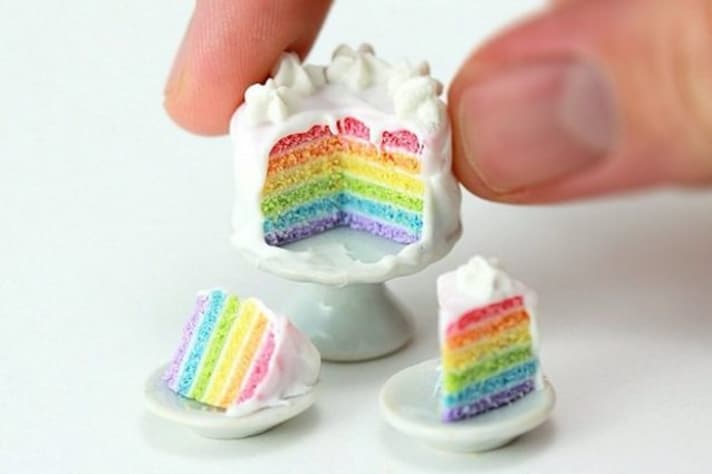Is The Tiny Food You See on Social Media Even Real? Here’s Everything You Might Have Been Wondering
Tiny food is real and fully edible, made with the same ingredients and methods as regular-sized dishes: originating in Japan, the trend spread globally through YouTube channels like "Miniature Space." Its creation requires precision, using miniature utensils and often tweezers for assembly.

In America, bigger is often seen as better. Grocery stores are stocked with XXL items, family-sized packets of everything, medications come in bulk bottles, and giant signs seem to compete for attention everywhere. Yet, what often goes viral on social media? Tiny food. These miniature, cute, and incredibly visually appealing creations captivate audiences worldwide. But is tiny food even real, or is it just a prop used for cartoons or kids' shows?
Is Tiny Food Real?
Yes, tiny food is indeed real! These miniature culinary creations are not just props or visual effects; they are fully edible, meticulously crafted versions of regular-sized dishes. From tiny pancakes and miniature pizzas to teeny-tiny sushi and burgers, tiny food is prepared with the same ingredients and cooking methods as their full-sized counterparts, just on a much smaller scale. The detail and effort put into making these mini masterpieces are genuine, and the end results are as delightful to taste as they are to look at.

What is The Appeal of Tiny Food?
The allure of tiny food lies in its sheer novelty and visual charm. There’s something inherently fascinating about seeing a perfectly crafted hamburger that’s small enough to fit on a coin. This fascination is amplified by the intricacy and precision required to create such tiny dishes. Social media thrives on unique and eye-catching content, and tiny food fits the bill perfectly. Its cute and whimsical nature sparks curiosity and delight, prompting viewers to share and engage with the content, driving its viral status.
The Origin and Evolution of Tiny Food
The trend of tiny food can be traced back to Japan, where "kawaii" (cute) culture is deeply ingrained. Tiny food became popularized through Japanese TV shows and YouTube channels that showcased the meticulous art of creating miniature dishes. One of the pioneers of this trend was the YouTube channel "Miniature Space," which began sharing videos of tiny food being prepared in tiny kitchens. The trend quickly spread globally, captivating audiences with its charm and intricacy. Today, tiny food has become a widespread phenomenon, with countless social media accounts and YouTube channels dedicated to this delightful culinary art form.

How is Tiny Food Made?
Creating tiny food requires a high level of skill and patience. Chefs use miniature utensils and cooking equipment to prepare these tiny dishes, ensuring that each ingredient is perfectly proportioned. The ingredients themselves are often the same as those used in regular-sized dishes, just in minuscule quantities. For example, a single slice of pepperoni on a tiny pizza might be the size of a fingernail.
Fun fact: some tiny food chefs use tweezers to handle ingredients and assemble the dishes, ensuring precision and detail. The popularity of tiny food has even led to specialized miniature cookware and kitchen sets being sold online, allowing enthusiasts to try their hand at this captivating culinary art.
;Resize,width=767;)
;Resize,width=712;)
;Resize,width=712;)
;Resize,width=712;)
